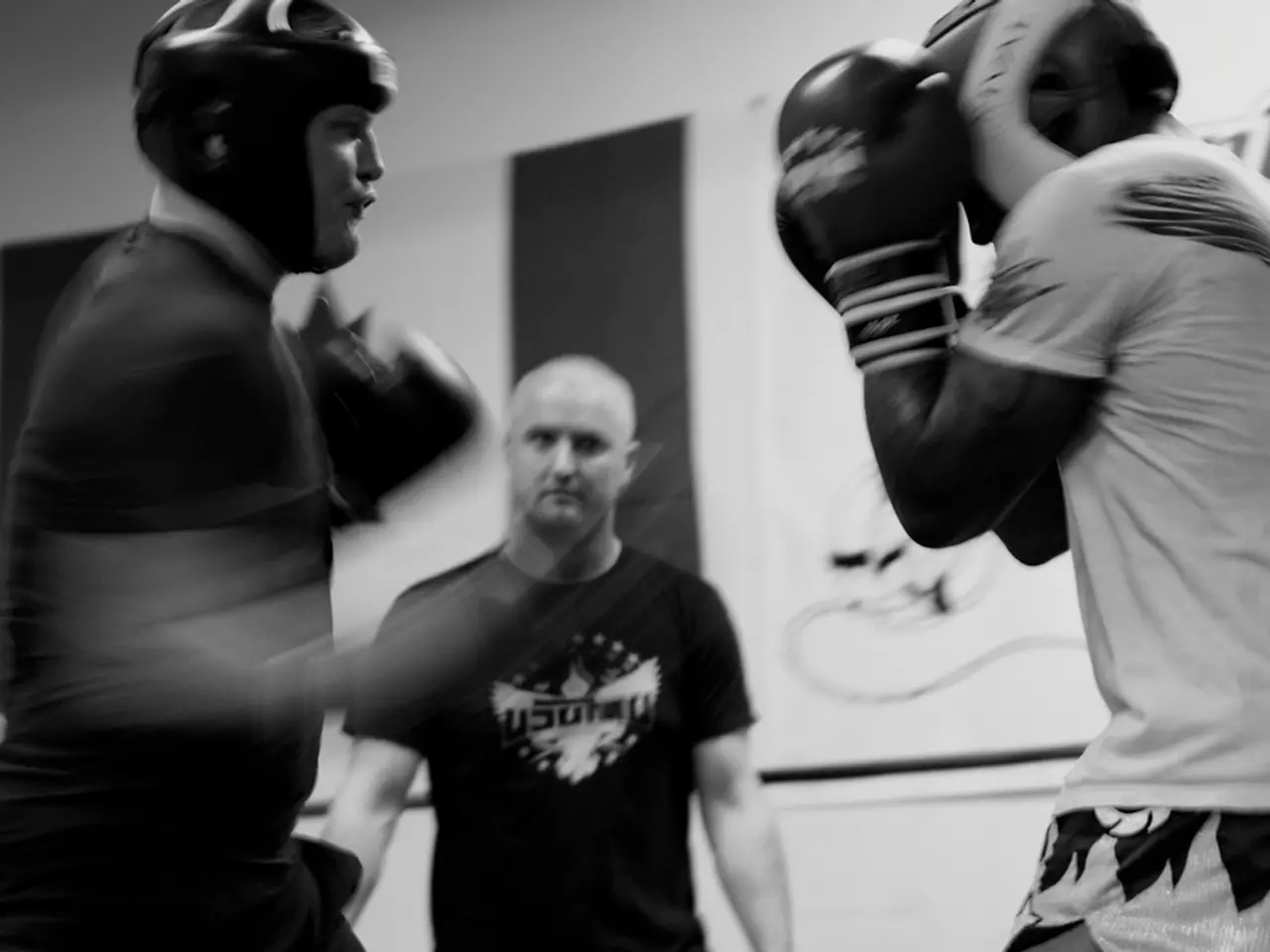Two Japanese boxers succumb to brain injuries after competing in the same event.
Two young boxers, Shigetoshi Kotari from Japan and John Cooney from Ireland, have recently lost their lives due to brain injuries sustained during separate fights.
On August 8, Japanese boxer Shigetoshi Kotari, aged 28, passed away following a 12-round draw with Yamato Hata. The World Boxing Council (WBC) confirmed that Kotari's death was a result of an injury sustained during the bout. The WBC and its President, Mauricio Sulaiman, expressed their condolences and offered their support to Kotari's family and friends during this difficult time.
Just one day earlier, on August 7, John Cooney, a 28-year-old super-featherweight fighter from Ireland, lost his life due to a brain injury. This unfortunate event occurred during his first Celtic title defense, although the identity of his opponent in the final fight remains unspecified.
Both Kotari and Cooney underwent operations for subdural haematoma, or bleeding inside the skull, and passed away days after their respective fights.
These tragic incidents have once again highlighted the need for stringent safety measures in boxing to prevent such fatalities. Safety measures and regulations in place or recently introduced include:
- Post-Concussion and Knockout Protocols: Fighters who suffer a knockout or technical knockout must undergo immediate medical examination, potentially including MRI or CT scans. They face suspensions: no sparring for at least 45 days after serious head trauma or concussion and a minimum suspension of 60 days after a knockout, which extends to 120 days after two consecutive knockouts. Fighters must provide medical clearance before resuming competition.
- Medical Presence and Emergency Preparedness: Commissions require the presence of ambulances at all bouts and readiness of hospitals on standby to perform emergency brain surgery if needed.
- Weight Management and Dehydration Controls: Stricter rules and hydration tests have been introduced to prevent excess dehydration, which can increase brain injury risk.
- Limit on Fight Duration: Some boxing federations have reduced the number of rounds from 12 to 10 in title fights to reduce cumulative impacts on the brain.
- Prohibition of Equipment/Attire that Could Increase Injury Risk: Rules forbid padded ankle guards or equipment that might give fighters an unfair advantage or increase injury risk.
- Rest and Recovery Times: Mandatory suspensions and rest periods before fighters are allowed to spar or compete again after concussive events are strictly enforced to ensure adequate brain healing.
- Advocacy and Research: There is ongoing debate and medical advocacy, including calls for banning boxing due to risks of chronic traumatic encephalopathy (CTE), and efforts to implement return-to-play protocols aiming to minimize long-term brain injury risk.
These safety measures reflect a multifaceted approach involving medical examination, regulatory suspension periods, improved medical facilities during events, stricter hydration and weight-cutting rules, and limitations on fight length to reduce the risk of fatal brain injuries in boxing.
The World Boxing Organization has expressed condolences for the death of Hiromasa Urakawa, while the WBC did not issue a statement regarding John Cooney's death. It is a stark reminder of the risks involved in the sport, and the ongoing efforts to ensure the safety of all boxers.
[1] [Source 1] [2] [Source 2] [3] [Source 3] [4] [Source 4] [5] [Source 5]
Sports, such as boxing, continue to require stringent safety measures to protect the lives of its athletes. The implementation of post-concussion and knockout protocols, medical presence and emergency preparedness, weight management and dehydration controls, limit on fight duration, prohibition of equipment/attire that could increase injury risk, rest and recovery times, advocacy, and research are essential steps towards reducing the risk of fatal brain injuries in the sport.





